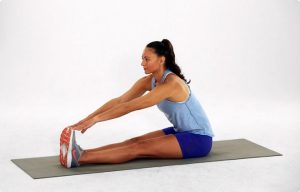HOW TO TEST YOUR FITNESS LEVELS

A fitness test is great way to test how fit you are. But knowing the specifics can help you set realistic fitness goals, monitor your progress and maintain your motivation. Once you know your starting point, you can plan where you want to go.
If your new to a fitness program, you want to test yourself before starting an exercise program and at the end. This is a great way on how to measure your progress. If you train year round, you can test yourself 3 times a year to keep motivated.
This is a simple test that consists of your resting heart rate and 4 simple movements. This can be done anywhere and without any equipment.
- Before starting a warm-up, we are going to test your normal resting heart rate. The ideal range is between 60-80 beats per minute(bpm). Avoid caffeine and excessive amounts of movement before doing this. Take your pulse at the base of your neck on the side of your windpipe. Using 2 to 3 fingers, press lightly on your skin and count the beats for 10 seconds, then multiply by 6. If your resting heart rate is higher than normal(100plus), look at these 4 things first. Unhealthy BMI(obesity), stress levels, caffeine and sodium intake.
- Next, do a warm-up. You can go for a 4-5 minute fast paced walk outside, run on the spot for 3-4 minutes, or do a series of dynamic stretches which should last 3-4 minutes. Warm-ups are crucial for optimal performance and less chance of injury.
- Exercise one is an elbow plank. The plank test measures the control and endurance of the back/core stabilizing muscles. If you cannot do a regular plank with your elbows and feet, start with a plank on your knees. When you can complete the knee plank for one minute, move on to a regular plank. Time how long you can stay up in good form. Once you break form, you are are finished. Rest 30 seconds to 1 minute and then move to the next exercise.
- Exercise 2 is a standing body weight squat. The squat test measures the muscular strength and endurance of your lower body(hips, quadriceps, hamstrings, low back, and many smaller supporting muscles)This exercise perform as many standing squats as you can without stopping. Keep at steady pace throughout the repetitions. Record your results. Rest 1 minute and then move to the next exercise.
- Exercise 3 is a push -up. This test measures the muscular strength and endurance of your upper body(chest, delts, triceps). If you cannot do a regular push-up, start from your knees. Once you can complete 10 knee push-ups, switch to regular push-ups. This exercise perform as many push-ups as you can without stopping. Keep a steady pace throughout the repetitions. Record your results. Rest 1 minute and move to the last exercise.
- The last exercise is a seated hamstring stretch. This test measures your flexibility, and specifically measures the flexibility of the low back and hamstring muscles. Key points to remember with this test is to keep your back straight throughout the movement, no jerky movements, and never force the stretch. Go only as far as your body will let you. Record how far you can reach forward and hold for 2-3 seconds.
Learn more about our Beginner’s Dumbbell Training course:
All in good health,
Paul Nam
